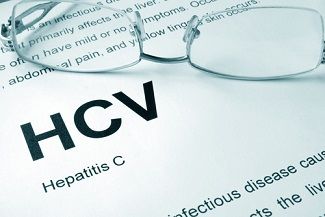DAA Therapy for Hepatitis C Is Associated With Lower Disease-Related Costs
This therapy is associated with lower disease-related costs after treatment, but the costs of other conditions may outweigh total cost reductions over time.

Direct-acting antiviral (DAA) therapy for patients with hepatitis C is associated with lower disease-related costs after treatment, according to a new study, but reductions in total medical costs lasted only 12 months.
The study, published in JAMA Network Open, examined Medicare claims to compare medical costs over a 30-month posttreatment follow-up period for 15198 patients with Medicare Part D who were diagnosed with hepatitis C in 2014 to determine whether DAA therapy reduces costs over time.
“The reduction in hepatitis C or liver disease—related costs lasted for 30 months after treatment, but the reduction in total medical costs lasted for only 12 months,” the study, by investigators at Pennsylvania State University and the University of Minnesota, noted. “This finding suggests that the costs of other conditions eventually outweigh the reduction in hepatitis C or liver disease–related costs in patients who used DAA therapy and needed medical care after the hepatitis C infection was cured.”
Patients with cirrhosis saw larger decreases in disease-related costs after DAA therapy than those without cirrhosis, but decreases were noted in both groups, supporting the removal of DAA restrictions by some payers, the study noted.
Disease-related costs during the first 6 months after treatment decreased by an average of $2498 in patients with cirrhosis and by $486 in patients without cirrhosis compared with control or untreated patients. Over 30 months, those average decreases were $15808 and $5372 respectively. Total medical costs dropped by $2905 for patients with cirrhosis and $1287 for patients without cirrhosis in the first 6 months after treatment. Over 30 months, total medical costs dropped by $7074 and $7497 respectively.
The study found no statistically significant reduction in total medical costs beyond 12 months after treatment and noted that further research is needed to evaluate the value of DAA therapy.
A previous study, which compared costs a year after DDA therapy, found the average decrease in disease-related costs for commercial insurance enrollees to be $13739, but the present study found that decrease to be $4984. Factors that may explain the difference include that the recent study controlled for differences in pretreatment costs and the prior study didn’t, and differences in the demographics and health risks of Medicare patients compared with those of commercial insurance.
“Although previous cost-effectiveness studies have suggested that DAA drugs would be cost-saving, we found that cost-saving did not occur during the 30-month period after treatment,” the study noted. “This seemingly inconsistent finding may be attributable to not assessing the value associated with improved quality of life and extended lives, which are key advantages of DAA therapy identified in past cost-effectiveness research. Studies of diverse outcomes over longer follow-up periods are necessary to assess the value of DAA drugs.”
The study also noted that timely initiation of DAA therapy may improve cost decreases. Patients who initiated DAA therapy within 12 months of diagnosis saw greater cost reductions.
Hepatitis C has a financial burden that is estimated to exceed $10 billion annually, and the disease is a growing concern. The annual rate of acute hepatitis C infections tripled between 2009 and 2018, according to a recent report. New recommendations from the Centers for Disease Control and Prevention call for hepatitis C screening at least once for all adults aged 18 years or older and for women during each pregnancy.
2 Commerce Drive
Cranbury, NJ 08512
All rights reserved.
